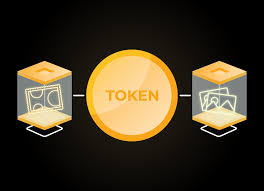Synchronous Optical Network (SONET)
Blog Credit: Trupti Thakur
Image Courtesy: Google
Synchronous Optical Network (SONET)
Synchronous Optical Network, or SONET. A communication protocol called SONET was created by Bellcore and is used to send a lot of data over relatively long distances using optical fibre. Multiple digital data streams are transmitted simultaneously over the optical fibre with SONET.
SONET stands for Synchronous Optical Network. SONET is a communication protocol, developed by Bellcore – that is used to transmit a large amount of data over relatively large distances using optical fibre. With SONET, multiple digital data streams are transferred at the same time over the optical fibre.
Key Points:
- Developed by Bellcore
- Used in North America
- Standardized by ANSI (American National Standards Institute)
- Similar to SDH (Synchronous Digital Hierarchy) which is used in Europe and Japan.
Why SONET is called a Synchronous Network?
A single clock (Primary Reference Clock, PRC) handles the timing of transmission of signals & equipments across the entire network.SONET Network Elements:
- STS Multiplexer:
- Performs multiplexing of signals
- Converts electrical signal to optical signal
- STS Demultiplexer:
- Performs demultiplexing of signals
- Converts optical signal to electrical signal
- Regenerator:
It is a repeater, that takes an optical signal and regenerates (increases the strength) it.
- Add/Drop Multiplexer:
It allows to add signals coming from different sources into a given path or remove a signal.
Why SONET is used?
SONET is used to convert an electrical signal into an optical signal so that it can travel longer distances.SONET Connections:
- Section:Portion of network connecting two neighbouring devices.
- Line:Portion of network connecting two neighbouring multiplexers.
- Path:End-to-end portion of the network.
SONET Layers:
SONET includes four functional layers:
- Path Layer:
- It is responsible for the movement of signals from its optical source to its optical destination.
- STS Mux/Demux provides path layer functions.
- Line Layer:
- It is responsible for the movement of signal across a physical line.
- STS Mux/Demux and Add/Drop Mux provides Line layer functions.
- Section Layer:
- It is responsible for the movement of signal across a physical section.
- Each device of network provides section layer functions.
- Photonic Layer:
- It corresponds to the physical layer of the OSI model.
- It includes physical specifications for the optical fibre channel (presence of light = 1 and absence of light = 0).
Advantages of SONET:
- Transmits data to large distances
- Low electromagnetic interference
- High data rates
- Large Bandwidth
Key Ideas
- Bellcore developed
- North American usage
- established by ANSI (American National Standards Institute).
- SDH (Synchronous Digital Hierarchy), which is utilised in Europe and Japan, is comparable.
Why is SONET referred to as a synchronised network?
Across the entire network, the timing of signal and equipment transmission is controlled by a single clock (the Primary Reference Clock, or PRC).
SONET Network Constituents
Multiplexer STS:
- performs signal multiplexing.
- optical signal from electrical signal is converted.
Demultiplexer STS:
- performs signal demultiplexing.
- optical signal to electrical signal conversion.
Regenerator:
- It is a repeater that regenerates (increases the strength of) optical signals.
Drop/Add Multiplexer:
- It enables the addition of signals from various sources to a particular path or the removal of a signal.
Why is SONET employed?
An electrical signal is changed into an optical signal by SONET so that it can travel farther.
Connections to SONET
- Section: The portion of the network that connects two nearby devices.
- Line: A section of the network that links two nearby multiplexers.
- Path: The network’s end-to-end section.
Layers of SONET:
There are four functional layers in SONET:
- Step Layer:
- It is in charge of transferring signals from their optical source to their optical destination.
- Providing path layer functions is STS Mux/Demux.
- The Line Layer
- It is in charge of signal transmission across a real line.
- Add/Drop Mux and STS Mux/Demux both offer Line layer functions.
- Stacking Section:
- It is in charge of signal transmission across a physical region.
- Each network device performs section layer functions.
- Optical Layer:
- It corresponds to the OSI model’s physical layer.
- It includes the optical fibre channel’s physical specifications (light is present when 1 and not present when 0).
Benefits of SONET
- transmits information over long distances
- very little electromagnetic interference
- greater data rates
- Broad Bandwidth
SONET’s drawbacks include:
- No standard that is compatible.
- SONET mux services are necessary for tributary services.
- Low cost and efficient for few channels.
- The SONET/SDH network management system is inadequate for managing and using the DWDM technique.
- At higher capacities, bandwidth efficiency is a problem.
- There must be more overhead.
Blog By: Trupti Thakur

27
JunSynchronous Optical Network (SONET)
Jun 27, 2023Recent Blog
India’s First Creator LandMay 21, 2025
Tokenization – An Initiative By RBIMay 20, 2025
The BioMetric E-PassportsMay 19, 2025
AI HallucinationsMay 16, 2025
India’s Steps Into 6GMay 15, 2025




